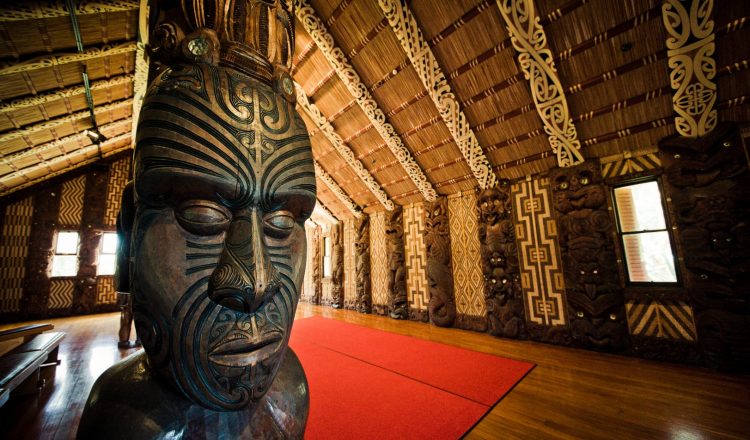毛利艺术
毛利人深信艺术和创造力是众神的载体,因此毛利艺术和手工艺品是他们文化的神圣部分,也是毛利人生活中在全世界可以识别的少数几个方面之一。毛利人认为,过去是未来,现在是一个循环。出于这个原因,许多传统艺术实践试图尽可能接近祖传技术。艺术的神圣性不仅在于它的创作,而且在于它经历了几代人的传递。
Pounamu(格林斯通)
Pounamu 或绿石是一种耐用的硬石,在毛利文化中珍藏。传统上,绿石可以是软玉、波文石或蛇纹石;但是,软玉是当今石头中最常见的形式。毛利人认为 pounamu 是 Taonga,神圣的毛利人宝藏。因此,可以找到绿石的地区通常受到政府立法的保护,当地的 iwi 负责其分发。
毛利人用 pounamu 做工具和装饰品。当该工具变得太旧而无法使用时,他们将宝石转换成珠宝。用绿石制成的作品被认为能够提高毛利社会的声望,但为自己购买或雕刻它可能会带来不好运气!绿石项链和珠宝在世界各地仍然非常受欢迎。迪士尼在电影莫阿纳中提到绿石的重要性。
Whakairo(雕刻)
Whakairo 或雕刻的艺术仍然是毛利人日常生活的重要组成部分。传统上,木材、石头和骨头都用于雕刻目的,也用于绿石。iwi 之间的雕刻风格不同,但 whakairo 会受自然和所用材料的影响。木材是毛利人最常用雕刻的材料,因为他们传统上会使用当地木材来制作 Waka(独木舟)。木雕仍然是现代毛利文化的重要组成部分,因为他们用木雕来装饰 Marae。骨雕通常使用鲸骨,并被用来制作复杂的工具,如钓鱼钩或装饰品。
毛利人雕刻通常描绘人体,或者玛纳亚(Manaia),作为监护人的鸟头蛇。whakairo 的艺术具有深刻的精神性,今天仍然传下来。
拉兰加(编织)
毛利人编织或拉兰加,不仅仅是制作衣服和服装。这是一种通过艺术家传递来自众神的信息的做法。这是一种神圣的艺术,已经历了世代传承,在新西兰仍在私下甚至在大学一级教授。
亚麻通常是首选材料,因为织工制作精美复杂的衣服、篮子、挂墙等等。在仪式上,毛利社区的成员穿着传统编织技术制作的衣服。表演者穿上它们来提高声望并宣布其遗产的一部分。毛利人编织通常使用自然可用的颜色,如黑色、白色和金色,但在现代,染料有时被用来增强产品。
Ta Moko(纹身)
说 Ta Moko 只是毛利文化中的纹身艺术将是一个很大的低调。对于那些选择承诺的人来说,这是一种非常特殊的做法。毛利纹身类似于其他波利尼西亚部落设计,但不仅仅是为了美学目的。脸部和身体上的纹身使用视觉语言,可以传达有关人、他们的部落、历史和社交地位的信息。这个部落信息充满文化自豪感,显示了毛利人的完整性。男女都可以纹身,脸部纹身具有最高荣誉,因为头部在毛利文化中被认为是神圣的。面部纹身强调表情,这可能会导致不熟悉他们的人发现纹身稍微令人生畏。情况不一定如此,因为它们主要作为身份声明,甚至可以促进毛利人改变生活方式,使之符合他们的纹身传达的信息。

















































